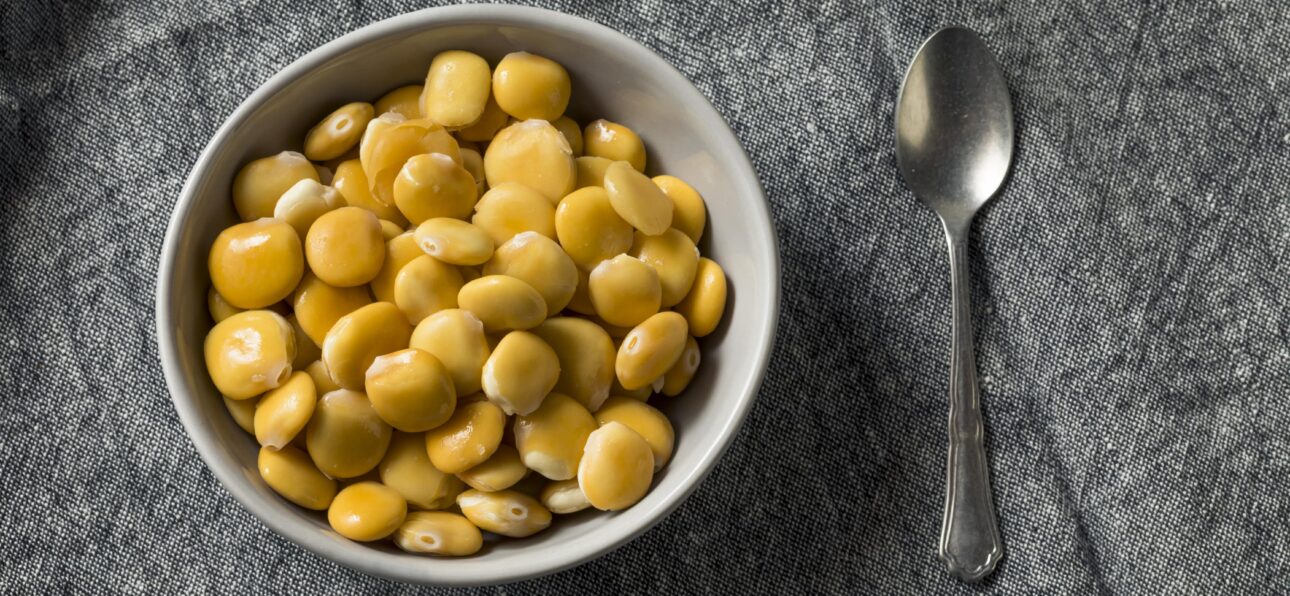Legumes have been a cornerstone of human nutrition across cultures for millennia, offering a powerful combination of protein, fiber, and essential nutrients. While beans, lentils, and chickpeas often dominate our plates and pantries, there’s a rising star in the legume family that deserves your attention: lupin. This ancient legume is experiencing a modern renaissance as more people discover its exceptional nutritional profile and versatility in the kitchen.
The Legume Family: A Nutritional Powerhouse
Legumes, belonging to the Fabaceae family, are flowering plants that produce seeds in pods. This diverse group includes beans, peas, lentils, chickpeas, soybeans, and peanuts. What makes legumes special is their unique ability to fix nitrogen in the soil through a symbiotic relationship with bacteria, making them both environmentally sustainable and nutritionally dense.
As a food group, legumes offer remarkable benefits:
- High-quality plant protein (typically 20-40% by dry weight)
- Rich in complex carbohydrates and dietary fiber
- Low in fat (with the exception of soybeans and peanuts)
- Abundant in vitamins, particularly B vitamins
- Excellent source of minerals including iron, zinc, magnesium, and potassium
- Contain bioactive compounds with potential health benefits
These nutritional characteristics explain why legumes are staples in many of the world’s healthiest dietary patterns, including Mediterranean and traditional Asian diets.
Introducing Lupin: The Ancient Legume Making a Comeback
Lupin (sometimes spelled “lupine”) has been cultivated for over 4,000 years, with its origins tracing back to the Mediterranean region and parts of South America. The Romans and Egyptians recognized its nutritional value, though traditional varieties contained bitter compounds called alkaloids that required extensive soaking and preparation to remove.
Modern food science has led to the development of “sweet” lupin varieties with significantly reduced alkaloid content, making them much more accessible for everyday consumption. Australia has become a leading producer of sweet lupin, particularly the Australian Sweet Lupin (Lupinus angustifolius), which is now gaining popularity worldwide.
Visually, lupin beans are flat, disk-shaped seeds with a distinctive yellow color, though some varieties can be white, brown, or even speckled. They have a mild, slightly nutty flavor that adapts well to various culinary applications.
Nutritional Profile: How Lupin Compares to Other Legumes
Lupin stands out even among its impressive legume relatives. Here’s how it compares to other common legumes (values per 100g dry weight):
| Nutrient | Lupin | Chickpeas | Lentils | Soybeans |
|---|---|---|---|---|
| Protein | 36-40g | 20g | 25g | 36g |
| Carbohydrates | 40g | 63g | 60g | 30g |
| Fiber | 30g | 17g | 11g | 9g |
| Fat | 6g | 6g | 1g | 20g |
| Glycemic Index | Very Low | Low | Low | Low |
What makes lupin particularly remarkable:
- Highest protein content among legumes: At nearly 40% protein by dry weight, lupin outperforms most other plant proteins in both quantity and quality, with a complete amino acid profile.
- Extraordinarily high fiber content: With about 30% dietary fiber, lupin contains nearly twice the fiber of chickpeas and three times that of lentils, supporting digestive health and promoting satiety.
- Low starch and low glycemic index: Unlike many legumes, lupin contains minimal starch, making it particularly suitable for low-carbohydrate diets and blood sugar management.
- Rich in antioxidants: Lupin contains significant amounts of polyphenols and other antioxidant compounds that may offer protective effects against oxidative stress.
- Impressive mineral content: Particularly high in manganese, phosphorus, magnesium, and iron compared to other legumes.
- Prebiotic properties: The unique fiber composition in lupin acts as a prebiotic, supporting beneficial gut bacteria.
Additionally, lupin is naturally gluten-free and contains minimal antinutrients compared to other legumes, making it more digestible and less likely to cause digestive discomfort.
Lupin Flour: A Nutritional Boost to Baking
Lupin flour, made from ground, dehulled lupin beans, has become increasingly popular as a high-protein, low-carbohydrate alternative to wheat and other grain-based flours. With its fine, yellowish appearance and subtle nutty flavor, lupin flour offers several advantages:
- Baking enhancement: The high protein content provides structure to baked goods, while the natural emulsifying properties improve texture and moisture retention.
- Partial wheat replacement: Typically, lupin flour can replace 20-30% of wheat flour in recipes without significantly altering texture, while boosting the nutritional profile.
- Gluten-free applications: Combined with other gluten-free flours, lupin adds protein and binding properties that are often lacking in gluten-free baking.
- Color enhancement: The natural yellow hue can give baked goods an appealing color without artificial additives.
Ideas for using lupin flour in your kitchen:
- Add to pancake or waffle batter for a protein boost
- Incorporate into bread and pizza dough to lower the glycemic index
- Use in pasta making for high-protein pasta
- Thicken soups and sauces instead of wheat flour
- Create protein-rich pie crusts and tart shells
- Enhance homemade energy bars and protein balls
Lupin Flakes: Versatility Beyond Flour
Lupin flakes are simply the split, dehulled lupin beans that have been flaked, similar to rolled oats in appearance but with a much higher protein content. These versatile flakes can be incorporated into numerous dishes:
- Breakfast applications: Mix with oats for high-protein overnight oats or porridge
- Texture enhancement: Add to veggie burgers, meatballs, or patties as a binder
- Plant-based cooking: Use as a meat extender or replacement in bolognese sauce, tacos, or chili
- Salad topping: Toast lightly for a crunchy, nutritious salad addition
- Grain bowls: Combine with quinoa or brown rice to boost protein content
- Yogurt enhancer: Sprinkle over yogurt along with fruits and nuts for a complete meal
- Baking addition: Fold into cookie dough, muffin batter, or granola mixtures
Unlike flour, flakes maintain more of their fibrous structure, providing additional texture and bulk to dishes.
Important Considerations When Using Lupin
While lupin offers impressive nutritional benefits, there are a few important points to consider:
- Allergenic potential: Lupin is recognized as a major allergen, particularly for individuals with existing peanut allergies due to cross-reactivity. Always introduce gradually if you’ve never consumed it before.
- Sourcing quality products: Look for lupin flour and flakes that specify they’re made from “sweet lupin” varieties to ensure low alkaloid content.
- Storage: Due to its high protein and fat content, lupin products are best stored in airtight containers in a cool, dry place to prevent rancidity.
- Taste adaptation: The distinct flavor may require some adjustment – start with smaller amounts in familiar recipes before progressing to lupin-forward dishes.
Conclusion
As we seek more sustainable, nutritious food sources, lupin emerges as a remarkable option that combines exceptional nutritional density with culinary versatility. Whether through flour, flakes, or whole beans, incorporating this ancient legume into your modern diet offers a simple way to boost protein, fiber, and overall nutritional quality without sacrificing taste or texture.
With its impressive nutritional profile surpassing even its legume relatives, lupin provides a powerful option for anyone looking to enhance their plant-based protein intake, manage blood sugar levels, or simply diversify their culinary repertoire. As researchers continue to explore its potential health benefits and food technologists develop innovative applications, lupin is poised to become a dietary staple for health-conscious consumers worldwide.








